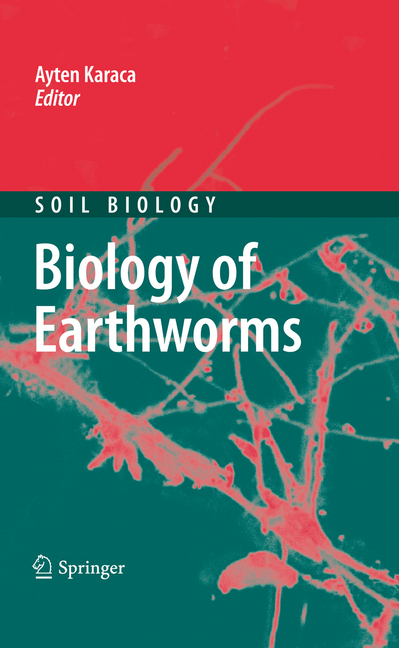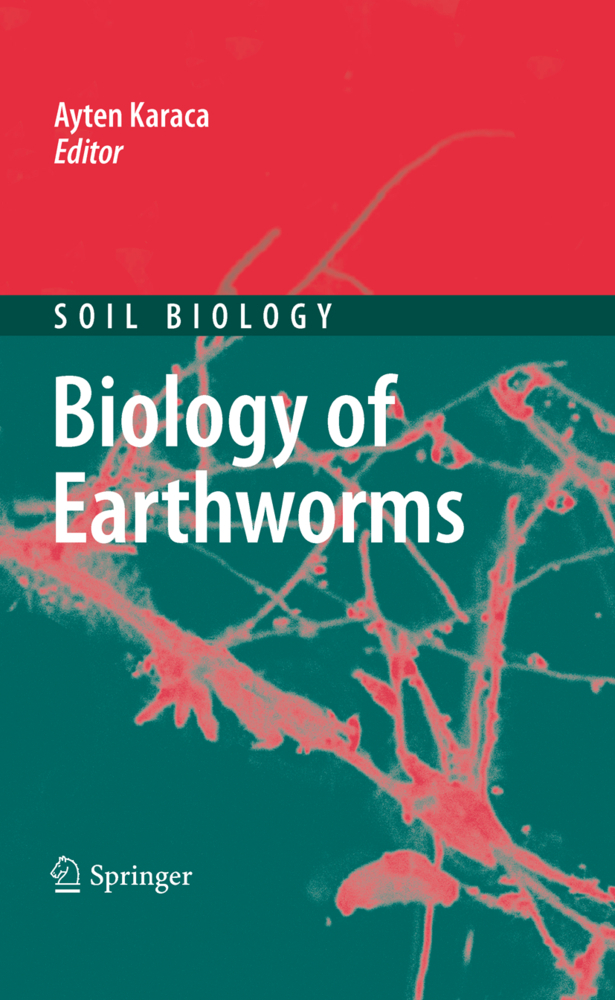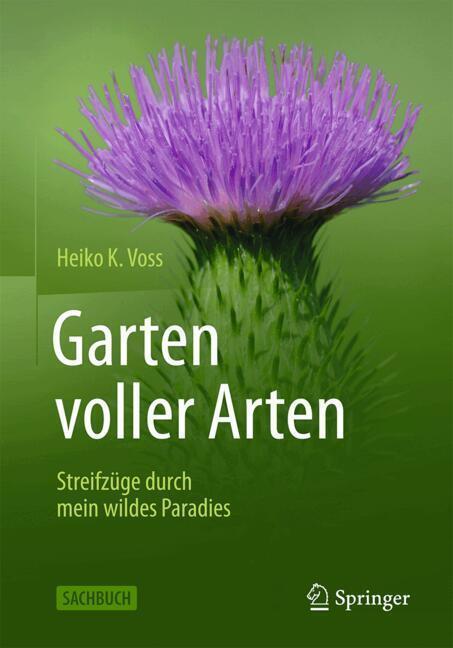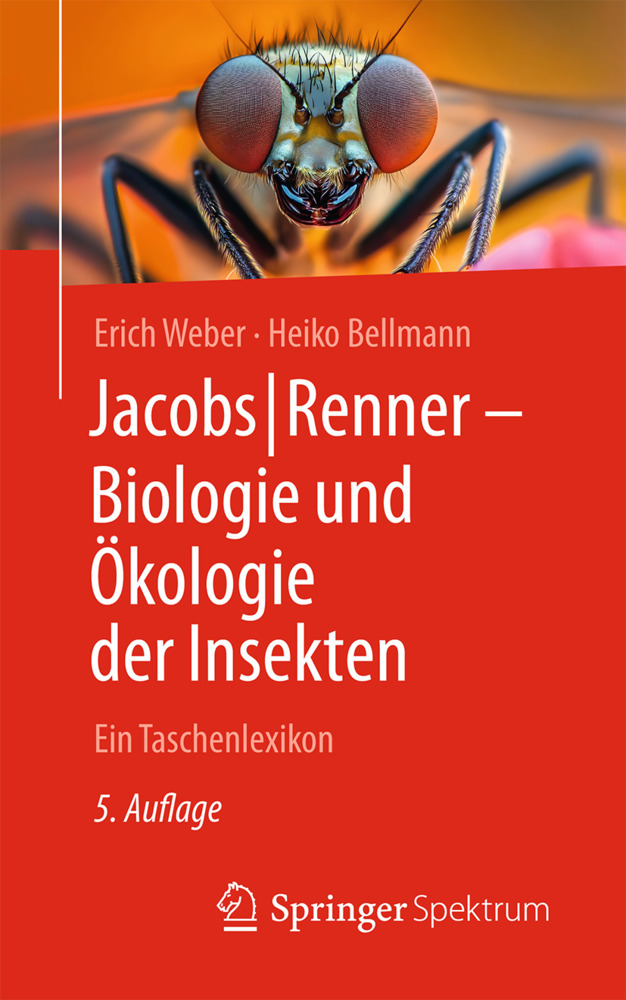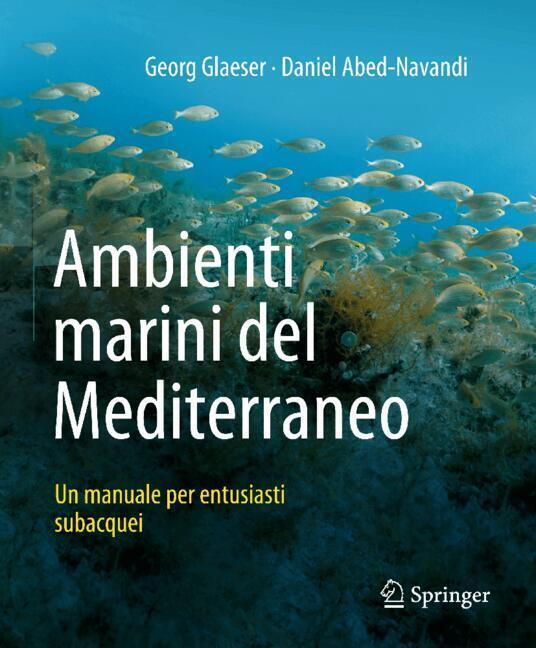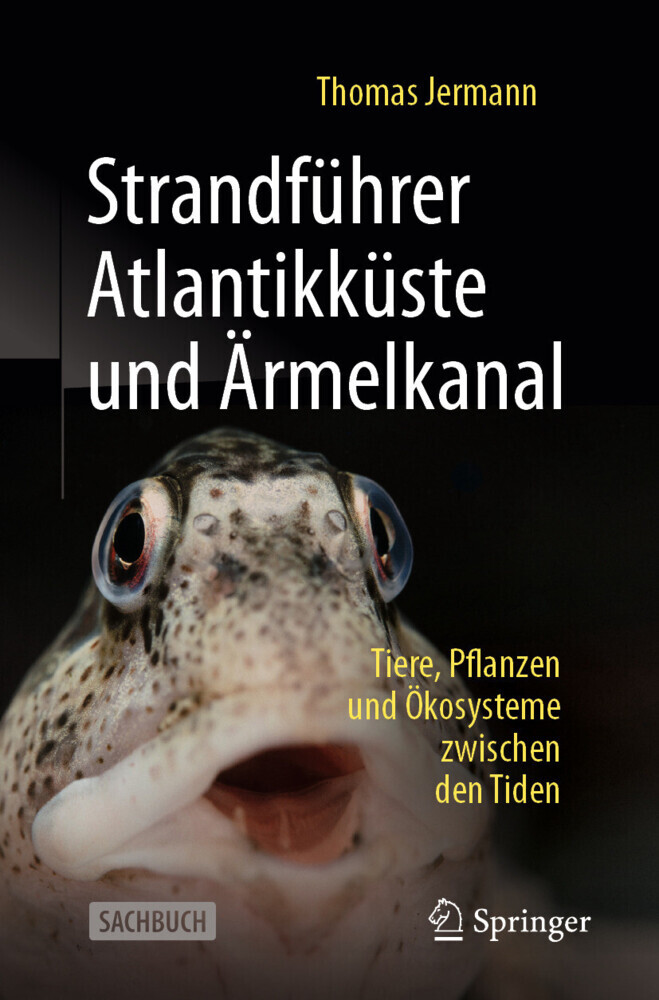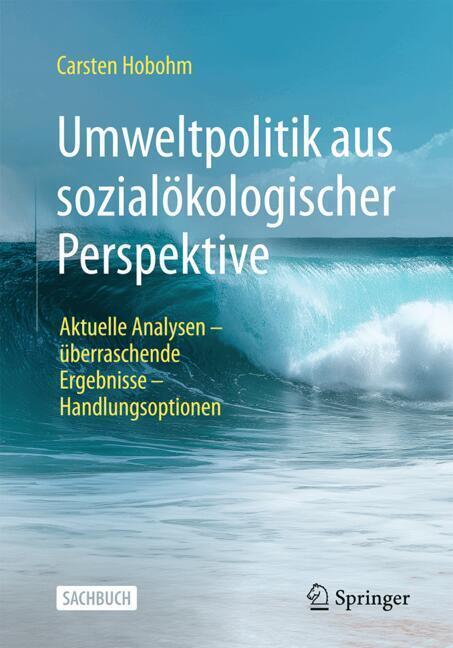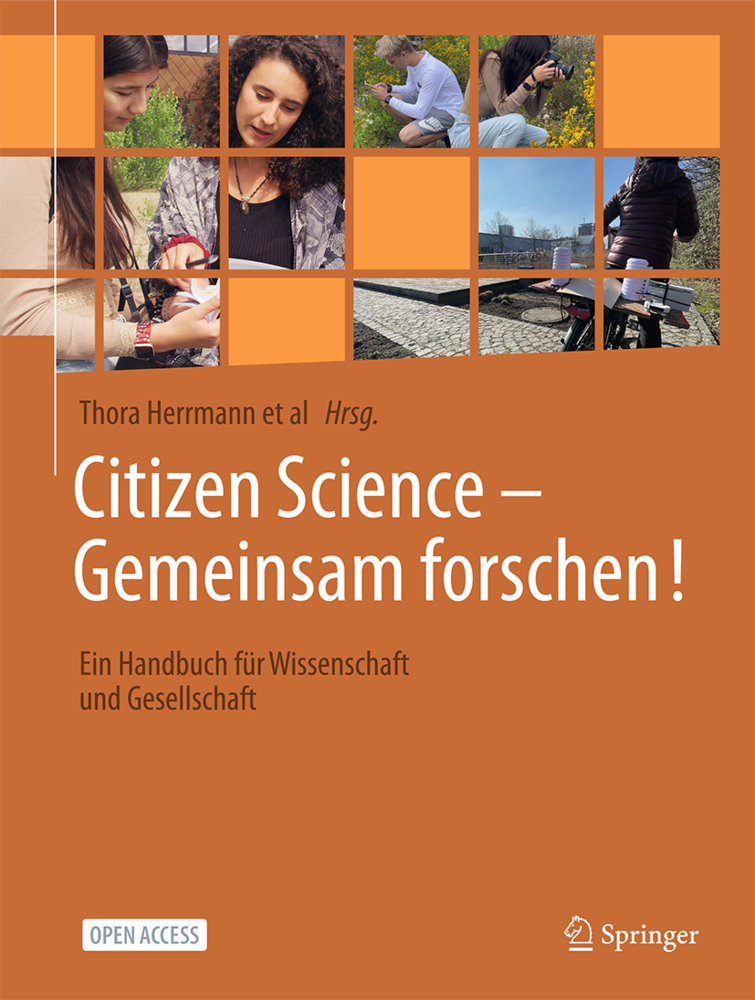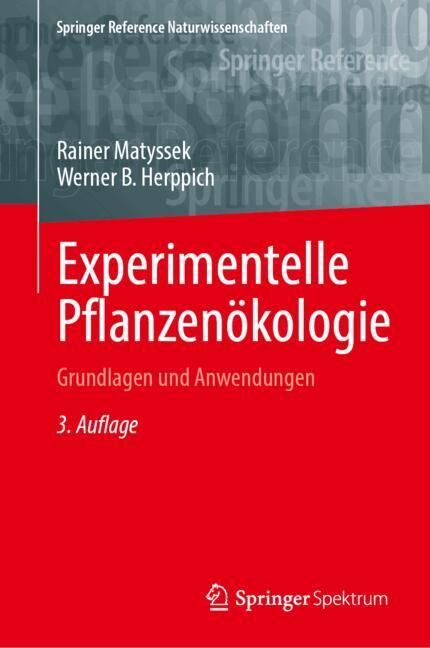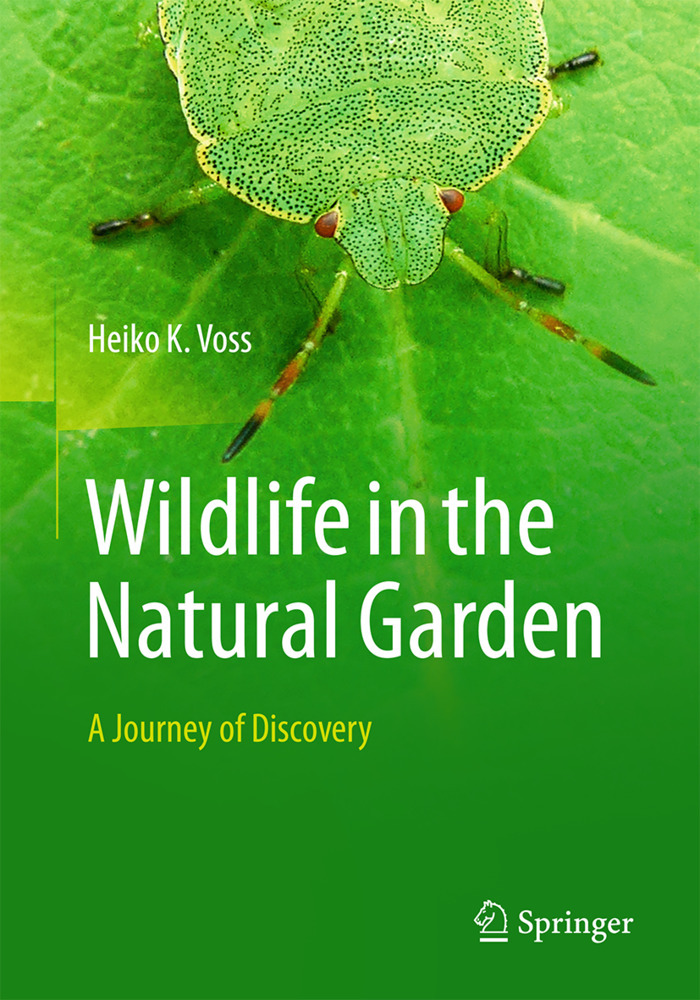Earthworms, which belong to the order Oligochaeta, comprise roughly 3,000 species grouped into five families. Earthworms have been called 'ecosystem engineers'; much like human engineers, they change the structure of their environments. Earthworms are very versatile and are found in nearly all terrestrial ecosystems. They play an important role in forest and agricultural ecosystems. This Soil Biology volume describes the various facets of earthworms, such as their role in soil improvement, soil structure, and the biocontrol of soil-borne plant fungal diseases. Reviews discuss earthworms' innate immune system, molecular markers to address various issues of earthworm ecology, earthworm population dynamics, and the influences of organic farming systems and tillage. Further topics include the characteristics of vermicompost, relationships between soil earthworms and enzymes, the role of spermathecae, copulatory behavior, and adjustment of the donated sperm volume.
1;Preface;6 2;Contents;10 3;Contributors;12 4;Chapter 1: Antimicrobial Vermipeptides: From Methods to Characteristics;16 4.1;1.1 Introduction;16 4.2;1.2 Protocol of Antibacterial Vermipeptide Preparation and Activity Assays;17 4.2.1;1.2.1 Animal and Bacterial Strains;17 4.2.2;1.2.2 Preparation of Crude Specimen;18 4.2.3;1.2.3 Purification of the Peptide;19 4.2.3.1;1.2.3.1 DE-52 Ion Exchange Chromatography;19 4.2.3.2;1.2.3.2 Gel Filtration;19 4.2.3.3;1.2.3.3 HPLC Purification of Peptide;19 4.2.4;1.2.4 Assessment of Peptide Characters;20 4.2.4.1;1.2.4.1 Molecular Weight Determination;20 4.2.4.2;1.2.4.2 Amino Acid Sequence Determination of the Isolated Peptide;20 4.2.4.3;1.2.4.3 Antibacterial Assays;20 4.2.4.4;1.2.4.4 Antitumor Activity Assays;20 4.2.4.5;1.2.4.5 Antiviral Activity Assays;21 4.3;1.3 Antibacterial Characteristics from Coelomic Fluid to Pure Peptide;21 4.3.1;1.3.1 Antibacterial Effects of Raw Coelomic Fluid of Earthworm;21 4.3.2;1.3.2 Antibacterial Effects of Earthworm Crude Antibacterial Peptides;22 4.3.3;1.3.3 Antibacterial Effects of Pure Antibacterial Peptides;22 4.3.4;1.3.4 Antimicrobial Chart of AVPF;23 4.3.5;1.3.5 Antitumor Activity of AVPF;23 4.3.6;1.3.6 Antiviral (PRV) Activity;25 4.4;1.4 Inducement of Peptides;25 4.4.1;1.4.1 Inducement Methods and Effects of Vermipeptide;25 4.4.1.1;1.4.1.1 Bacterial Treatment;25 4.4.1.2;1.4.1.2 Physical Treatment;26 4.4.1.3;1.4.1.3 Chemical Treatment;26 4.4.2;1.4.2 Characteristics of Induced Peptides;26 4.4.2.1;1.4.2.1 Antibacterial Vermipeptide Inducement;26 4.4.2.2;1.4.2.2 Spectrum of Fortypeptide;27 4.4.2.3;1.4.2.3 Evaluation of Different Inducements for Antimicrobial Peptides;27 4.4.2.4;1.4.2.4 Comparison of Antibacterial Components of Coelomic Fluid Extraction;28 4.5;1.5 Antibacterial Vermipeptide Family Found;29 4.6;1.6 Conclusion;31 4.7;References;31 5;Chapter 2: Optimizing Earthworm Sampling in Ecosystems;33 5.1;2.1 Introduction;33 5.2;2.2 How to Sample? Optimizing Earthworm Sampling Methods;34 5.2.1;2.2.1 Material and Methods;35 5.2.1.1;2.2.1.1 Preparation of Expellants;35 5.2.1.2;2.2.1.2 Earthworm Sampling;36 5.2.2;2.2.2 Salient Observations;37 5.2.2.1;2.2.2.1 Concentration Optimization;37 5.2.2.2;2.2.2.2 Efficiency Assessment;38 5.2.3;2.2.3 Interpretation;40 5.2.3.1;2.2.3.1 Concentration Optimization;40 5.2.3.2;2.2.3.2 Efficiency Assessment;41 5.3;2.3 Where to Sample? Optimizing Spatial Sampling Design;43 5.3.1;2.3.1 Spatial Autocorrelation and Sampling Design;43 5.3.2;2.3.2 Sample Unit Size and Shape;44 5.4;2.4 How Many Samples? Optimizing Sample Size;47 5.5;2.5 Conclusion;50 5.6;References;50 6;Chapter 3: Earthworms and Soil Structure;53 6.1;3.1 Introduction;53 6.2;3.2 Soil Aggregates and Structure;53 6.3;3.3 Earthworms and Soil Structure;55 6.3.1;3.3.1 Earthworm Species Effects on Burrowing and Casting;57 6.3.2;3.3.2 The Effect of Burrows on Soil Structure;58 6.3.3;3.3.3 The Effect of Casts on Soil Structure;59 6.4;3.4 Conclusion;61 6.5;References;61 7;Chapter 4: Comparative Anatomy of the Calciferous Gland of Lumbricid Earthworms;65 7.1;4.1 Introduction;65 7.2;4.2 Materials and Methods;67 7.3;4.3 Calciferous Gland Types Based on Anatomy;67 7.3.1;4.3.1 Well Developed Esophageal Pouches in Segment X and Lateral Enlargements in Segments XI and XII (Subtype I: Anterior and Posterior Lateral Enlargements of Similar Size);67 7.3.2;4.3.2 Well-Developed Esophageal Pouches in Segment X and Lateral Enlargements in Segments XI and XII (Subtype II: Glandular Portion in Segment XII Smaller in Size);70 7.3.3;4.3.3 Small Esophageal Pouches in Segment X and Lateral Enlargements (Subtype I: Glandular Portion in Segment XI Bigger in Size);71 7.3.4;4.3.4 Small Esophageal Pouches in X and Lateral Enlargements (Subtype II: Variable Number of Dilated Segments);72 7.3.5;4.3.5 Well-Developed Esophageal Pouches in X But No Lateral Enlargements;73 7.3.6;4.3.6 Esophageal Pouches in X Absent But Lateral Enlargements Present in Segments XI and XII (Subtype I: Segment X Not Enlarged);76
Karaca, Ayten
| ISBN | 9783642146367 |
|---|---|
| Artikelnummer | 9783642146367 |
| Medientyp | E-Book - PDF |
| Auflage | 2. Aufl. |
| Copyrightjahr | 2010 |
| Verlag | Springer-Verlag |
| Umfang | 316 Seiten |
| Sprache | Englisch |
| Kopierschutz | Digitales Wasserzeichen |

